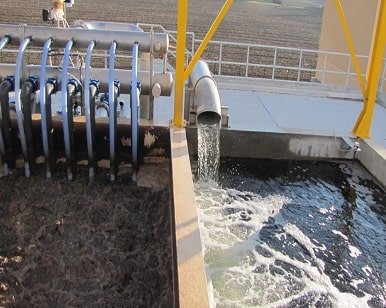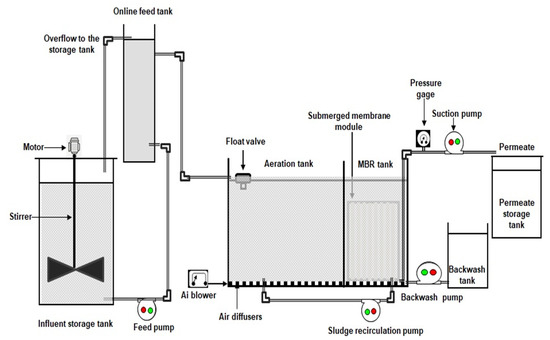Troubleshooting Common Issues with Membrane Bioreactor Systems
Troubleshooting Common Issues with Membrane Bioreactor Systems
Blog Article
Exactly How Membrane Layer Bioreactors Are Transforming Water Purification Solutions
The appearance of membrane bioreactors (MBRs) represents a substantial improvement in the field of water filtration, combining biological treatment processes with advanced membrane layer purification innovations. As global water shortage increases, the function of MBRs in promoting drinkable water reuse and lasting water monitoring ends up being significantly essential.
Summary of Membrane Bioreactors
Membrane bioreactors (MBRs) represent a considerable development in water purification modern technology, as they incorporate biological therapy processes with membrane layer filtering. This combination improves the effectiveness of wastewater therapy by using bacteria to degrade organic contaminants while all at once utilizing semi-permeable membrane layers to separate treated water from suspended microorganisms and solids.
The MBR system commonly contains a biological activator where the microbial population metabolizes contaminants, adhered to by a membrane layer filtering unit that retains biomass and enables only tidy water to pass through. This dual performance causes higher effluent top quality compared to standard treatment methods. MBRs can be run in both set and continuous circulation modes, providing flexibility in layout and application.
They additionally enable the healing of water for reuse, thus adding to water sustainability efforts. Generally, MBRs are at the forefront of improving water treatment effectiveness and quality, showcasing the capacity for innovative options in environmental management.
Advantages of MBR Technology
The assimilation of organic treatment with membrane layer purification uses many advantages for water filtration procedures. One of the main advantages of Membrane Bioreactor (MBR) innovation is its capability to effectively get rid of both organic and not natural impurities, causing top quality effluent. The membrane layers serve as a physical barrier, protecting against put on hold solids and microorganisms from travelling through, which boosts the total security and integrity of cured water.
In addition, MBR systems require a smaller footprint contrasted to standard treatment approaches, enabling more efficient area utilization. This compact design is especially useful in urban settings where land is restricted. MBRs also show functional versatility, suiting differing influent top qualities and flow prices without significant performance deterioration.
In addition, the process uses improved nutrient removal capacities, specifically for nitrogen and phosphorus, which are essential for stopping eutrophication in receiving waters. The minimized sludge production related to MBR innovation likewise equates to reduce disposal costs, making it a cost-effective service over time - Membrane Bioreactor. On the whole, the benefits of MBR modern technology placement it as a leading selection for sustainable and innovative water purification systems, resolving both environmental and economic issues
Applications in Water Purification
Applications of Membrane Layer Bioreactor (MBR) modern technology in water purification are varied and impactful, attending to various therapy needs throughout multiple fields. MBRs properly combine biological treatment procedures with membrane layer filtering, making them perfect for metropolitan wastewater therapy, industrial effluent monitoring, and even drinkable water reuse initiatives.
In metropolitan setups, MBRs are progressively employed to boost the top quality of dealt with wastewater, enabling conformity with rigid discharge regulations and assisting in the recycling of water for irrigation and non-potable usages. Their compact style also makes them suitable for city settings where room is limited.
Industrially, MBR modern technology is used to deal with procedure water and wastewater, especially in industries such as food and beverage, drugs, and fabrics. By successfully getting rid of pollutants and put on hold solids, MBRs help markets minimize ecological effects while recovering beneficial resources from wastewater streams.
Moreover, MBRs are getting traction in decentralized water therapy applications, where small-scale systems can be released in remote areas or developing regions. This versatility makes it possible for communities to achieve lasting water monitoring options, enhancing access to tidy water while minimizing reliance on conventional treatment approaches.
Study and Success Stories

In one more Going Here example, a textile production center in Bangladesh adopted MBR modern technology to address its wastewater obstacles. The system reduced chemical oxygen need (COD) click to read more degrees from 1,200 mg/L to much less than 100 mg/L, therefore fulfilling regulatory standards and significantly lessening environmental impact.
The University of Cape Town's MBR installation has proven reliable in treating greywater for non-potable reuse on university. This task not just saves potable water but likewise offers as an instructional model for lasting methods.
Additionally, a fish and shellfish processing plant in Norway used MBR innovation to treat effluents containing high levels of raw material, attaining over 90% toxin removal. These study underscore MBR innovation's adaptability and its crucial duty in improving water high quality across varied applications.
Future of Water Treatment Solutions
As global water deficiency and contamination difficulties intensify, cutting-edge water treatment remedies are coming to be progressively vital to make certain lasting accessibility to clean water. The future of water treatment hinges on the assimilation of advanced modern technologies that enhance the efficiency and effectiveness of purification procedures. Membrane bioreactors (MBRs) are at the center of this evolution, integrating biological therapy with membrane filtering to generate high-grade effluent suitable for different applications.

Emerging fads such as source recuperation from wastewater, consisting of nutrients and power, will even more transform therapy centers into environmentally friendly hubs. Improvements in nanotechnology and membrane layer materials promise enhanced efficiency and durability of purification systems.

Final Thought
Their function in drinkable water reuse and sustainable water monitoring highlights their value in attending to international water deficiency obstacles. Proceeded research and development will certainly further improve the efficacy and adoption of MBR technology, ensuring a resistant future for water treatment options.
The emergence of membrane layer bioreactors view (MBRs) represents a significant advancement in the field of water filtration, combining biological treatment processes with sophisticated membrane layer filtering innovations. As international water scarcity increases, the duty of MBRs in promoting drinkable water reuse and sustainable water monitoring becomes increasingly critical. They also make it possible for the recuperation of water for reuse, therefore contributing to water sustainability campaigns.As worldwide water scarcity and pollution obstacles escalate, innovative water treatment solutions are becoming increasingly crucial to make sure sustainable access to tidy water. Their function in potable water reuse and sustainable water monitoring highlights their value in attending to worldwide water deficiency obstacles.
Report this page